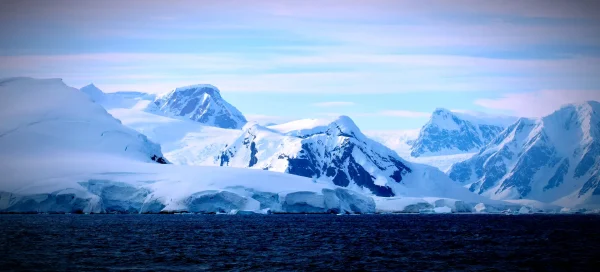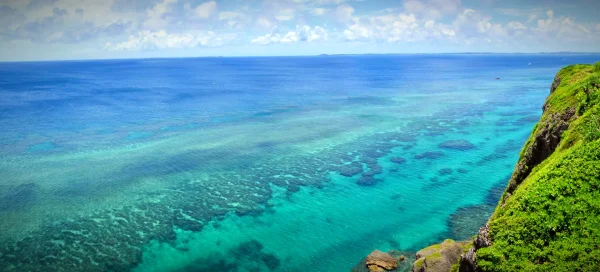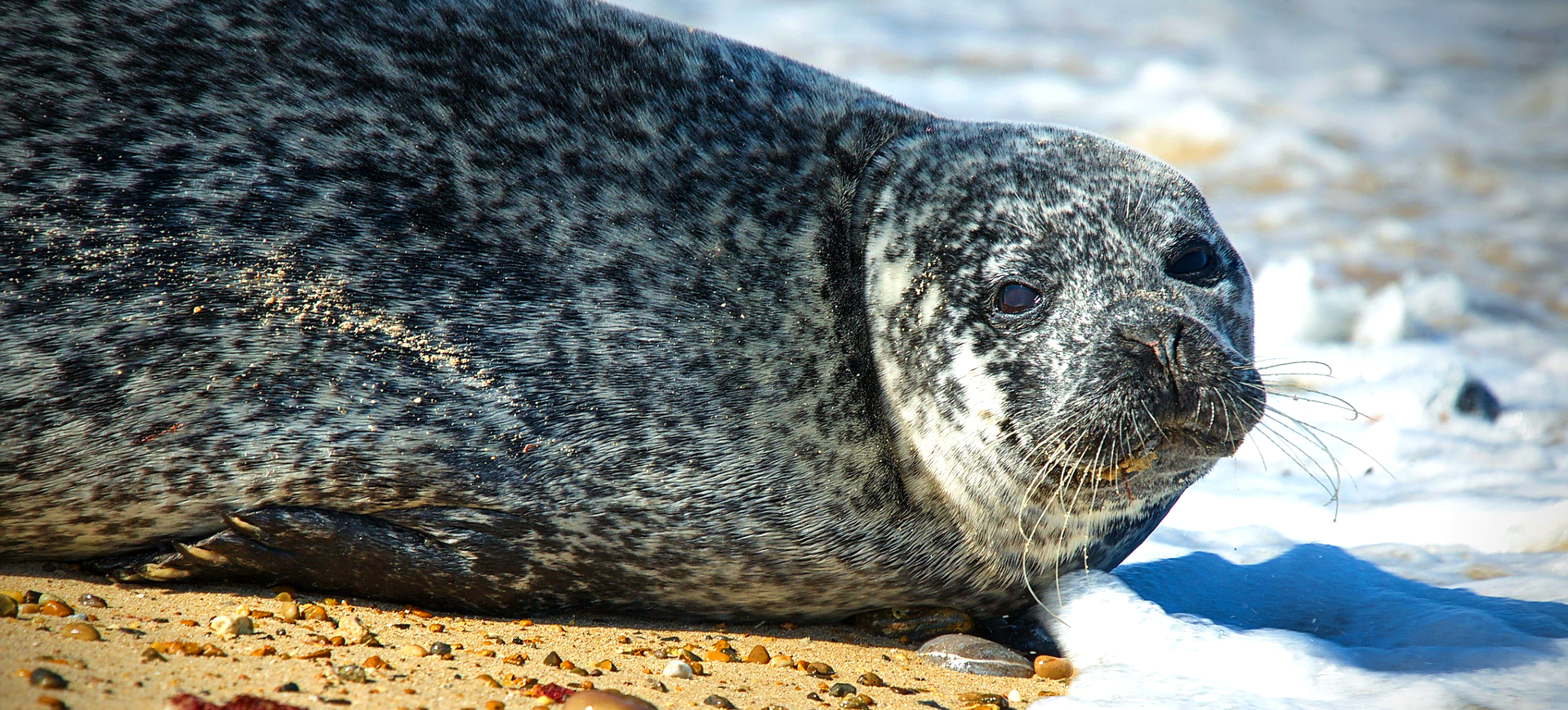Overview
The harbor seal (Phoca vitulina) is a marine mammal belonging to the Phocidae family. It is widely distributed along the coasts of the Northern Hemisphere, from the Arctic Ocean to temperate regions. Harbor seals are semi-aquatic, meaning they spend significant time in water and land. They are well-adapted to their aquatic lifestyle, with a streamlined body and flippers that aid in swift swimming.
Known for their curiosity and generally non-aggressive nature, harbor seals are often spotted lounging on rocks, ice, or sandy beaches during their haul-out periods. These periods are vital for resting, thermal regulation, and social interaction. The seals are also polygynous, meaning a single male, or “bull,” may mate with multiple females during the breeding season.
Harbor seals exhibit sexual dimorphism, with males slightly larger and heavier than females. The typical coloration of the harbor seal’s coat varies from gray or brown to tan, often featuring spots or rings. These patterns serve as effective camouflage against predators such as killer whales and sharks.
Taxonomy
Kingdom
Phylum
Class
Order
Family
Genus
Species
Sub Species
Type
Physical Description:
Adult harbor seals possess a robust, spindle-shaped body covered with a thick layer of fat, which aids in buoyancy and thermal insulation. The head is rounded with large, expressive eyes adapted for underwater vision. Their flippers are relatively short but highly effective for swimming and basic terrestrial locomotion.
Coat patterns differ between individuals, ranging from solid colors to complex patterns of spots, rings, or stripes. The fur also changes color when wet, typically appearing darker. While males are generally larger than females, both sexes share the same basic physical characteristics, such as the absence of external ear flaps.

Lifespan: Wild: ~25 Years || Captivity: ~35 Years

Weight: Male: 245–285 lbs (111–129 kg) || Female: 220–265 lbs (100–120 kg)

Length: Male: 60–75 inches (152.4–190.5 cm) || Female: 55–70 inches (139.7–177.8 cm)

Height: Male: 25–28 inches (63.5–71.1 cm) || Female: 24–26 inches (60.9–66 cm)

Top Speed: 12 mph (19 km/h)
Characteristic:
Native Habitat:
Harbor seals are versatile and adaptable, inhabiting many coastal habitats. They are commonly found along rocky shores, estuaries, and sandy beaches near human settlements. They are also seen in glacier fjords and river mouths, particularly in the higher latitudes.
During the breeding season, harbor seals seek out isolated areas away from predators and human disturbances for pupping. These areas are typically characterized by easy access to water for quick escapes and abundant prey availability. Females usually return to the same sites year after year to give birth.
Climate Zones:
Biogeographical Realms:
Continents:
Diet:
Diet & Feeding Habits:
Harbor seals are predatory and opportunistic feeders, primarily consuming a wide range of fish such as herring, flounder, and salmon. They also eat crustaceans, cephalopods, and other marine invertebrates. Seals use their sensitive whiskers to detect the vibrations and movement of their prey in water.
To catch their prey, harbor seals employ different hunting strategies, including solitary and group hunting. They tend to hunt close to the shoreline and are known to follow fishing boats for scraps. Although they are primarily daytime feeders, some have been observed to adjust their feeding times based on prey availability and human activity.
Mating Behavior:
Mating Description:
During the mating season, male harbor seals establish territories in areas frequented by females. The males vocalize and display aggressive behavior to fend off rivals. However, harbor seals are not as vocal or physically aggressive as some seal species.
Females typically give birth to a single pup after a gestation period of approximately nine months. The pup is born well-developed and can swim shortly after birth. Pups are nursed for four to six weeks before they are weaned and become independent. After weaning, the female becomes receptive and mates again, often with a different male.
Reproduction Season:
Birth Type:
Pregnancy Duration:
Female Name:
Male Name:
Baby Name:
Social Structure Description:
Harbor seals are generally solitary animals but will form loose aggregations, particularly during haul-out periods and the breeding season. These groups are not structured hierarchically; individuals come and go as they please. Unlike other pinniped species, harbor seals do not form large, dense colonies.
Social interactions are mostly limited to mothers and their pups during the nursing period and males and females during the mating season. Vocalizations and body postures are used for communication between mothers and pups and between competing males during the mating season.
Groups:
Conservation Status:
Population Trend:
Harbor seals are generally abundant, but their population status can vary depending on the region. In areas where they are well-protected, populations are stable or even increasing. Factors contributing to their success include establishing protected marine areas and effective fishery management.
However, in other regions, especially parts of Europe, populations have declined due to various factors, including habitat destruction, pollution, and accidental bycatch in fishing gear. These declines have prompted more stringent conservation measures, although effectiveness varies by region.
Population Threats:
The primary threats to harbor seals include habitat loss due to coastal development, pollution, and human disturbance during haul-out and breeding seasons. Pollutants like heavy metals and PCBs can accumulate in their tissues, causing health issues and affecting reproduction.
Other significant threats include accidental entanglement in fishing gear and illegal shooting. Climate change also poses a concern, as it alters the distribution and availability of prey species and potentially affects haul-out sites due to rising sea levels and melting ice in polar regions.
Conservation Efforts:
Conservation efforts for the harbor seal mainly focus on habitat preservation and reducing human impact. Many countries have implemented laws and regulations to protect haul-out sites, especially during the critical pupping season. Educational programs are also in place to minimize human disturbance.
Additionally, rescue and rehabilitation centers significantly treat injured or stranded individuals, further contributing to the species’ conservation. Collaborative international efforts, such as marine protected areas that cross national boundaries, are also underway to ensure the long-term survival of the harbor seal.
Additional Resources:
Fun Facts
- Harbor seals can sleep underwater and come up for air without waking.
- Their whiskers are highly sensitive and can detect fish moving in the water.
- Harbor seals have been observed “surfing” on waves, both for travel and apparently for play.
- Unlike sea lions, harbor seals cannot rotate their hind flippers under their body for efficient land movement.
- They can dive up to 1,500 feet (457 meters) and hold their breath for up to 30 minutes.
- Harbor seals often return to the same haul-out sites for years, displaying strong site fidelity.
- They have excellent hearing above and below water despite lacking external ear flaps.
- Some harbor seals have been known to live up to 35 years in captivity, longer than their typical lifespan in the wild.
- Harbor seals display a unique “banana pose” while sunning, arching their body with only the head and tail touching the ground.
- Harbor seals can contract and relax pupils to adjust to varying light conditions, aiding their adaptability to different environments.








